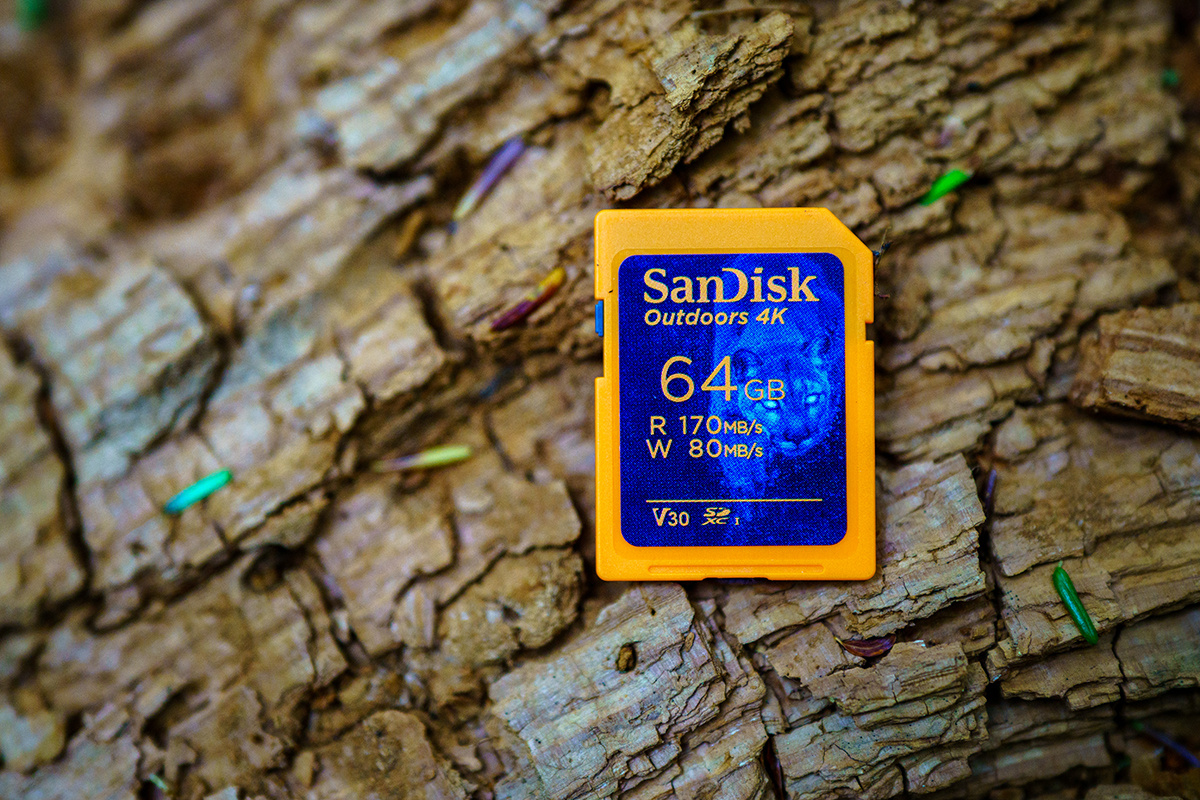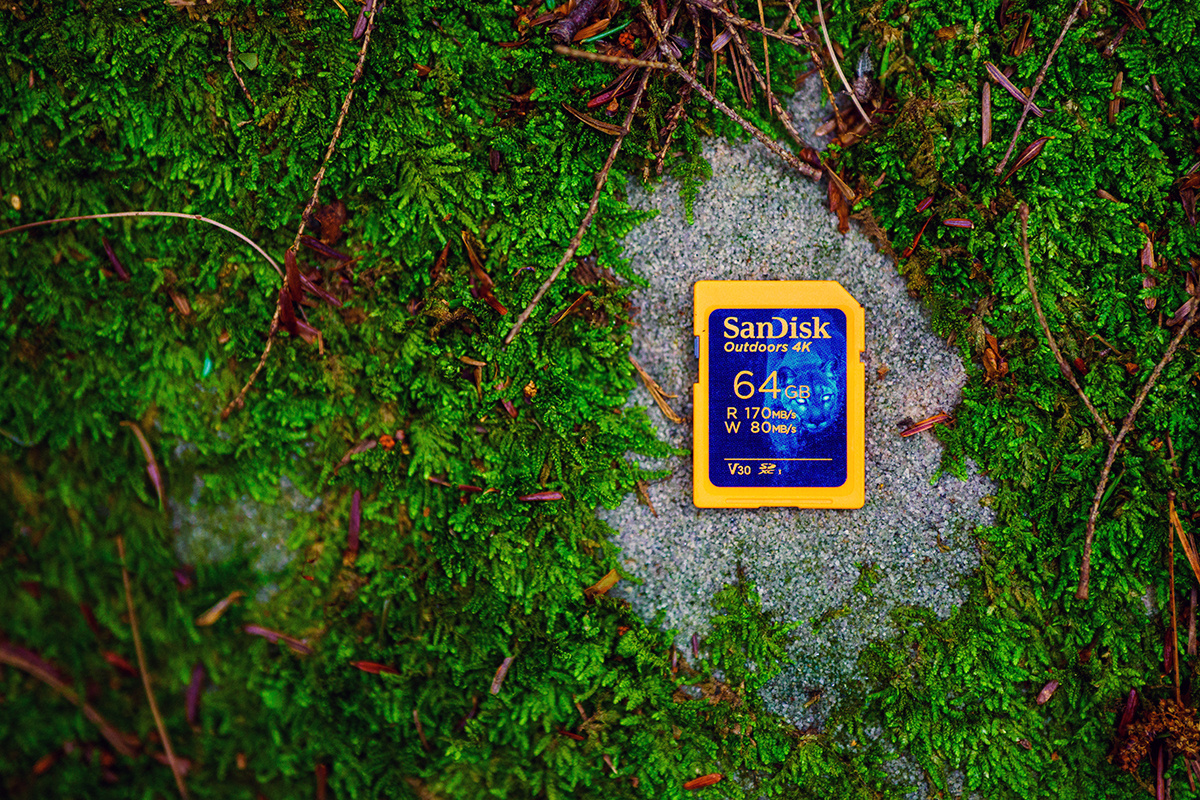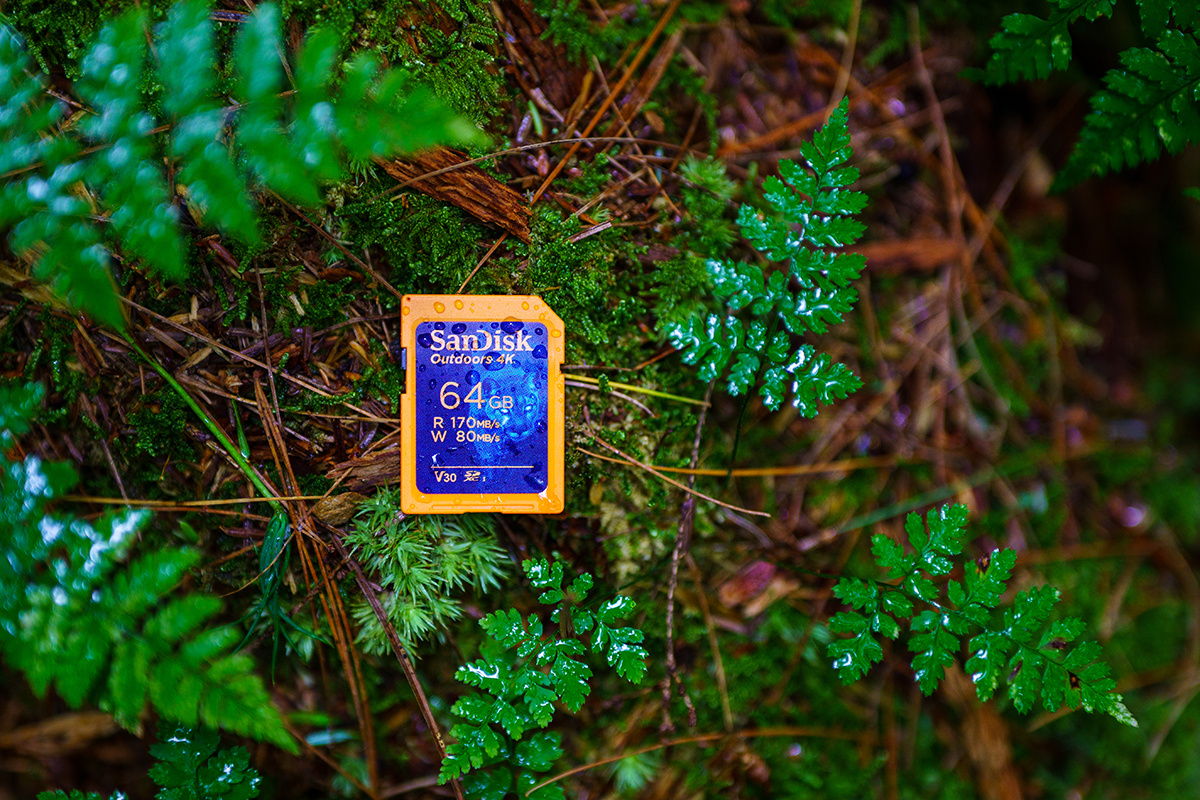My favorite part about writing for Fstoppers is the chance to try out new and interesting camera gear. Recently, I got the opportunity to try the latest SD cards from SanDisk, the Outdoors series cards. Available in both SD and Micro SD, these are some of the latest tech for strong, durable memory cards. Let’s see how they performed in the field.
Memory cards are a crucial but often overlooked aspect of a photographer’s camera kit. There are a few stats to look for when choosing the right one. The basics are that you want the right type for your camera, fast read and write speeds, and good storage size. As an outdoor photographer, however, there is another layer to look for: durability. Being out in rain, snow, mud, humidity, and especially running long exposure or video in those conditions pushes your cards to the limit. Not all cards are rated for such, and the chance of losing your photos and videos due to poor-quality cards is a scary thought.
Card Stats
- The 64 GB cards Read 170 MB/s, Write 80 MB/s
- The 512 GB cards Read 190 MB/s, Write 130 MB/s
- All the SD Outdoors cards are Interface UHS-I
- Withstand up to 95% relative humidity
- Withstand submersion in 1 meter of water for up to 72 hours
- Drop-resistant up to 16.4 feet
- Shock-resistant up to 500G of shock
- Withstand static magnetic fields and airport X-ray machines up to 5,000 gauss
- Withstand up to 10,000 insertions into cameras and card readers

When SanDisk shared the stats of their new Outdoors cards with me, the first thing that caught my eye was their durability rating! “The cards are tested to withstand extreme temperatures from -25°C (-13°F) to 85°C (185°F), 95% relative humidity while in use, plus submersion in 1 meter (3+ feet) of fresh and salt water for up to 72 hours.” By comparison, most SD cards are only water resistant and have a much smaller temperature range. Temperature comes into play even when you don’t realize it, just due to running video, long exposures, or high burst rates—the gear heats up. If you photograph while out in direct sunlight or warm summer climates, this can easily cause the camera to get hot. Suitable for everything from trail cams left out in the weather to your camera and video gear brought on your adventures, durability is important.
SanDisk Outdoors 4K SD UHS-I cards are specifically designed to support devices used outside, including trail cams, spotting scope cameras, bow- or gun-mounted POV cameras, marine plotters, and GPS mapping devices.
The main stats that we look for in cards still stack up versus the standard memory card. With a selection of 64 GB, 128 GB, 256 GB, and 512 GB, there’s a wide variety of storage sizes to fit your preferences or budget. With the 512 GB SDXC UHS-I card, you can store up to 719 minutes of 4K video or 23,040 10-megapixel RAW photos.

The speed of these cards also stacks up, with the 512 GB cards being the fastest Outdoors cards at Read 190 MB/s and Write 130 MB/s. Not to nerd out too hard, but this puts them ahead of most standard SD cards as the fastest UHS-I card SanDisk currently lists. It is the second-fastest of any type of SD card that SanDisk offers, just behind their SanDisk Extreme PRO SDXC™ UHS-II Card. What’s the difference? Well, UHS-I cards have one line of pins on the back, and UHS-II are newer technology and have two lines of pins. This means they can operate at higher speeds with the dual pin design, but only in relatively newer cameras designed for their dual pin type. In short, UHS-I cards are more widely accepted in various devices and are usually more affordable too!

Another neat aspect of the SanDisk Outdoors cards is their bright blaze orange color. From an accessibility standpoint, the bright color on such a small part of our kit really makes the card stand out. It is super easy to find in my pack. Most memory cards are black, and if you’ve ever dropped one, these buggers can be hard to find! This one, with its vivid orange color, is definitely eye-catching. Whenever I photographed in a group setting and changed cards, it got noticed right away. I got a lot of compliments.
In The Field
The specific card that I received to try is the SanDisk Outdoors 4K SD UHS-I Card in 64GB. My Sony a7R IV perfectly accepted this card. I popped it in, formatted it, and was off photographing without any issue. To test the card, I brought it to the beautiful old-growth forests of Northwestern and Central Pennsylvania. With thousands of acres of towering hemlocks and white pines, I was in forest heaven.

Summer heat and rain in the forecast gave me the perfect opportunity to test the SanDisk Outdoors card. You will notice rain in my test images—it is all real. Everything, including me, got completely soaked. Aren’t wet boots when hiking the worst? Well, the weather that would scare away most photographers brought the forest alive. The trees, forest floor, and especially the abundant ferns and greenery were saturated and lush from the rainy conditions. The card held up through all of it, never skipping a beat. From high burst to video and long exposure photos, the card just did its job effortlessly. Again, I really appreciated the peace of mind it gave me, knowing this card is waterproof when I was in literal pouring rain.
Conclusion
I was very impressed with the performance and durability of the SanDisk Outdoors 4K SD UHS-I Card in 64GB. When testing it in hot, rainy, humid Highland forests, its waterproof rating stood up to the task effortlessly. As photographers, we spend so much on our cameras, lenses, tripod, bag, and accessories, and the one point of failure to lose our hard-earned photographs or video is the memory card. With a strong, durable, and fast card like the SanDisk Outdoors 4K SD UHS-I Card I feel confident in it standing up to my crazy adventures. I love being able to share cool finds like this with you all. If you would like to add a SanDisk Outdoors card to your kit they can be found here at B&H Photo.














Wow, a total knockoff of ProMaster's Rugged SD cards.
They are also a lot more affordable than the Pro Master versions. Heck as long as they work and are actually reliable I'll buy'em. That's capitalism babeh!
How so?
I kind of see what they are trying to do. That said I dropped a normal SanDisk SD card into the ocean once and picked it up and it was fine after drying it off for 24 hours!!
How can the cards have read/write speeds above 104 MB/s while having only UHS-I?
Do you need to solder the memory onto a different chip to achieve this?
Those R/W speeds are bursts, not sustained. So, they are maximum speeds that might be achieved for a short amount of time. And I believe the highest speeds are only achieved when using a SanDisk reader that can work with their proprietary overclocking protocols.
I dont understand the market for these, they are really slow and UHS-I ? seems odd?
Not every one needs to shoot at Mach Jesus.
With those write speeds, these are clearly aimed at use in trail cameras. Many of the claims in this article are somewhat suspect, most cameras that are anything newer than entry-level would quickly outrun this card.
I have always used Sandisk, and I'm very happy. But you must buy Extreme version or better (time ago it was enough with Ultra version).
UHS-I. Pass. Way the hell too slow for my r5. UHS-II at a minimum.
If your sd card is getting wet inside your camera you have bigger problems. Outside the camera just put them in a waterproof card case and you are good to go.
It's kind of funny that they look like the cover of a National Geographic Magazine.
SD cards are very rugged as is. Can’t see them take abuse inside my camera or in its case in my bag. In my opinion , a lot of marketing nonsense.
The box standard cards from SanDisk I find, are very flimsy. I switched to Lexar ones because the plastic casing is far more sturdy than the OG SanDisk cards. It must be quite a challenge to try and bring a new card to market without sounding like you're just putting out a load of crap to sell a product. These don't scream *Heavy Duty* to me unfortunately.